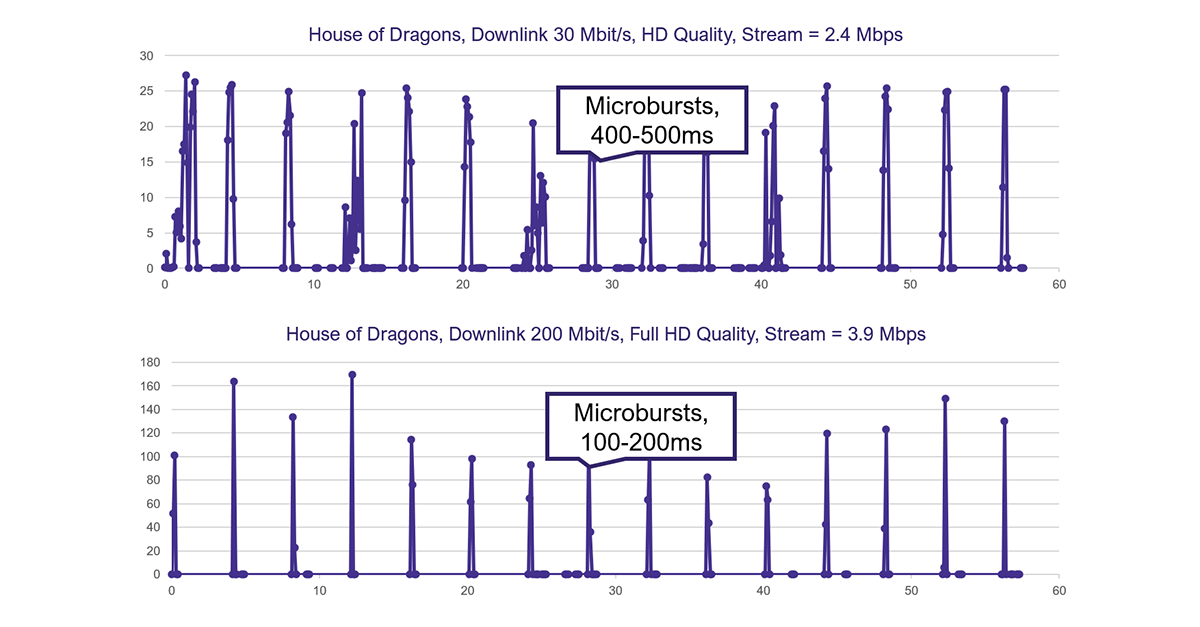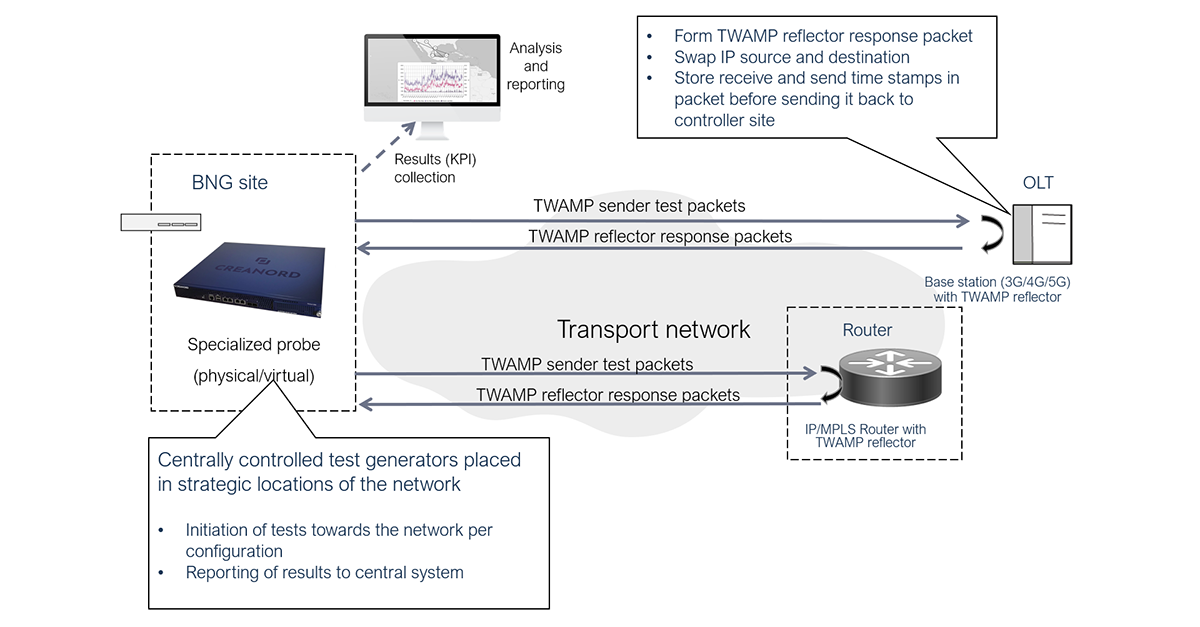Beyond Speed Tests: Using TWAMP for Active Monitoring of Fiber-Optic Broadband Networks

For broadband service providers, the competitive battleground used to be defined by download speeds. As fiber-optic networks have matured, however, the focus has shifted from “how fast” to “how good.” The overall user experience is now the key differentiator. Studies consistently show that network quality is a top buying factor for a significant percentage of users and the primary driver of customer churn. When a customer’s video conference stutters or their online game lags, they don’t blame the application; they blame their internet provider.
Until now, providers have typically monitored their networks by collecting utilization data from network devices using SNMP (Simple Network Management Protocol). When a link’s utilization approaches 100%, it’s a clear signal that a capacity upgrade is needed. Monitoring specific SNMP counters for metrics like packet loss can also indicate that a link is congested.
However, the demands of the modern internet user present new challenges that traditional methods like SNMP performance monitoring cannot adequately address:
- High-Bandwidth Streaming: More than 70% of all internet traffic is video. 4K and 8K streaming, especially with adaptive bitrate technologies, is incredibly bursty. The 5-minute averages typically reported by SNMP monitoring solutions are incapable of capturing these critical microbursts that directly impact viewing quality.
- New Latency-Sensitive Applications: The rise of cloud gaming, real-time video collaboration for remote work, and other interactive applications has made network performance more critical than ever. These services depend on very low and stable latency (jitter) and zero packet loss. SNMP monitoring simply cannot measure these end-to-end service quality KPIs.
- Differentiated Services and SLAs: Providers now offer a wide range of service tiers, from standard residential packages to premium business services and low-latency “gamer” plans. Each of these service classes has different performance requirements and Service Level Agreements (SLAs). End-to-end service quality KPIs must be tracked for each class individually, something SNMP tools are not designed to do.
The picture below illustrates the challenging nature of adaptive bitrate streaming. Instead of a stable bitrate, there are regular bursts of traffic. Higher download speeds mean this traffic becomes even more bursty.

Figure 1 Stream profiles for adaptive bitrate streaming
End-to-End Performance Monitoring with the TWAMP Protocol
A new approach is needed to meet these challenges. The Two-Way Active Measurement Protocol (TWAMP) was designed precisely for this kind of high-precision performance monitoring. Standardized over 15 years ago by the IETF, TWAMP is a robust, mature, and widely supported protocol. Its major benefits include:
- Granularity: With centralized TWAMP initiators, you can send test packets at a high frequency—often every second or even every 100 milliseconds—to customer endpoints (CPEs), aggregation points, and core routers. This allows you to capture the microbursts and transient issues that SNMP misses.
- Accuracy: TWAMP offers superior accuracy compared to the commonly used ICMP ping. It is designed to eliminate processing delays within the reflecting device from the round-trip time calculation. The reflection capability is lightweight to implement in network equipment and is typically optimized for accurate timestamping. This allows for microsecond-level accuracy in delay and jitter measurements.
- Multi-Vendor Support: The TWAMP protocol has been widely implemented in network devices from all major vendors, including routers, switches, and even some CPEs. This means the capability for TWAMP measurement is readily available across your entire network, both for end-to-end paths and for monitoring intermediate segments.
How to Efficiently Deploy Active TWAMP Monitoring for Fiber-Optic Networks
To efficiently deploy active TWAMP monitoring in a fiber-optic network, the correct way to deploy it is a few specialized, high-performance probes at central locations, typically close to the Broadband Network Gatewa (BNG), to measure performance with TWAMP towards customer endpoints or, most typically, towards Optical Line Terminals (OLTs). The central probes are managed by a centralized performance management system that handles all measurements, collects results, and applies analytics, machine learning, and AI to produce actionable reports.

Figure 2 Centralized TWAMP Active Monitoring for Broadband Fiber Networks
This centralized approach has multiple benefits:
- Scalability: Specialized probes are designed for one purpose: high-performance active monitoring. They can handle hundreds of thousands of packets per second, meaning just a few probes in core locations can cover an entire nationwide network.
- Harmonized, Multi-Vendor View: Specialized probes provide a single, consistent source of performance data across all network domains and vendors. Monitored devices only need to support the simple TWAMP reflector function, which is widely available. All advanced logic and analytics happen in the centralized system, guaranteeing a harmonized set of results.
- Segmented View: This approach doesn’t just give you an end-to-end view. It also allows you to monitor performance to intermediate routers along the path. This segmentation is crucial for efficient troubleshooting, allowing you to quickly pinpoint which part of the network is causing quality degradation.
- Cost-Efficiency: You only need to deploy a few specialized probes to monitor a very large network, leveraging the built-in reflector functionality in your existing equipment. This centralized model stores all data in one system, provides a unified multi-vendor view, and eliminates the manual work of consolidating reports. It also simplifies integration with higher-level OSS systems by acting as a single mediation point.
Conclusions
The TWAMP protocol is an essential tool for modern broadband network performance monitoring. As user demands evolve and applications become more sensitive to latency and jitter, it is more important than ever to understand the true performance of your network. A centralized, probe-based approach to TWAMP monitoring is the most effective and scalable way to stay on the pulse of your network, ensure exceptional user experience, and reduce customer churn.
About Creanord
Creanord offers technology solutions for network performance measurements and quality assurance. Driven to turn data into outperforming networks, Creanord helps mobile operators, managed service and wholesale providers, as well as critical communications providers, to design, offer, and deliver services with confidence.
With PULSure, service providers can track network performance and user experience in order to meet the most demanding service needs of their customers.
Since 2000, Creanord has served customers who offer the most demanding networks and applications, making societies smarter, businesses more competitive, and our lives safer.
Creanord is headquartered in Helsinki, Finland, with global operations and a partner network.